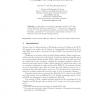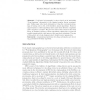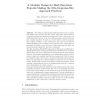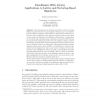108
click to vote
ASIACRYPT
2009
Springer
15 years 7 months ago
2009
Springer
We present a new construction of non-committing encryption schemes. Unlike the previous constructions of Canetti et al. (STOC ’96) and of Damg˚ard and Nielsen (Crypto ’00), ou...
120
Voted
ASIACRYPT
2009
Springer
15 years 7 months ago
2009
Springer
A leakage-resilient cryptosystem remains secure even if arbitrary, but bounded, information about the secret key (or possibly other internal state information) is leaked to an adv...
103
click to vote
ASIACRYPT
2009
Springer
15 years 7 months ago
2009
Springer
Adaptive oblivious transfer (adaptive OT) schemes have wide applications such as oblivious database searches, secure multiparty computation and etc. It is a two-party protocol whic...
ASIACRYPT
2009
Springer
15 years 7 months ago
2009
Springer
Abstract. In this paper, we present a preimage attack for 42 step
115
click to vote
ASIACRYPT
2009
Springer
15 years 7 months ago
2009
Springer
Code-based cryptography is often viewed as an interesting “Post-Quantum” alternative to the classical number theory cryptography. Unlike many other such alternatives, it has th...
101
click to vote
ASIACRYPT
2009
Springer
15 years 7 months ago
2009
Springer
The design of cryptographic hash functions is a very complex and failure-prone process. For this reason, this paper puts forward a completely modular and fault-tolerant approach to...
79
Voted
ASIACRYPT
2009
Springer
15 years 7 months ago
2009
Springer
An r-collision for a function is a set of r distinct inputs with identical outputs. Actually finding r-collisions for a random map over a finite set of cardinality N requires at ...
119
click to vote
ASIACRYPT
2009
Springer
15 years 7 months ago
2009
Springer
We look at iterated power generators si = se i−1 mod N for a random seed s0 ∈ ZN that in each iteration output a certain amount of bits. We show that heuristically an output of...
103
Voted
ASIACRYPT
2009
Springer
15 years 7 months ago
2009
Springer
In this paper we present two related-key attacks on the full AES. For AES-256 we show the first key recovery attack that works for all the keys and has 299.5 time and data complex...
112
click to vote
ASIACRYPT
2009
Springer
15 years 7 months ago
2009
Springer
We demonstrate how the framework that is used for creating efficient number-theoretic ID and signature schemes can be transferred into the setting of lattices. This results in cons...





